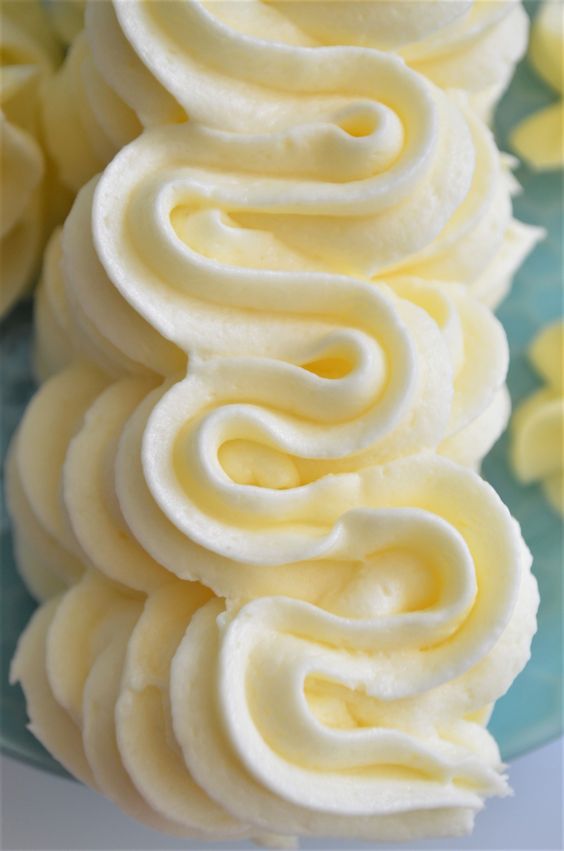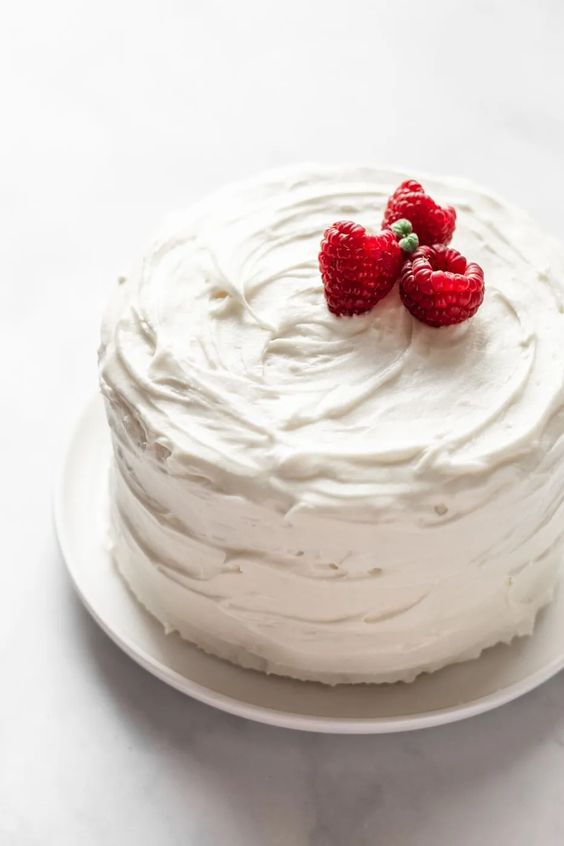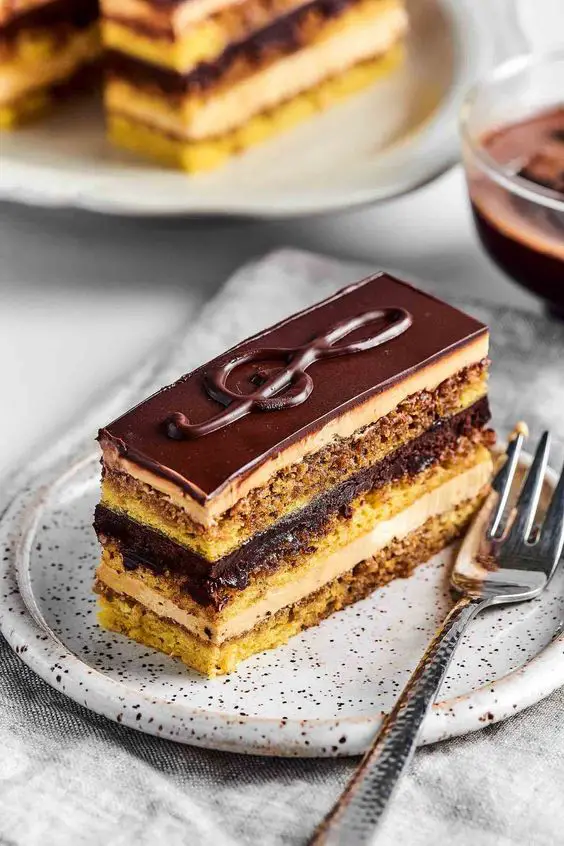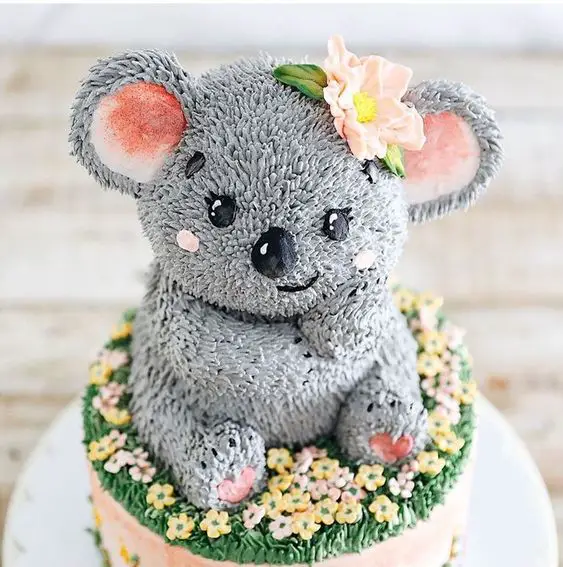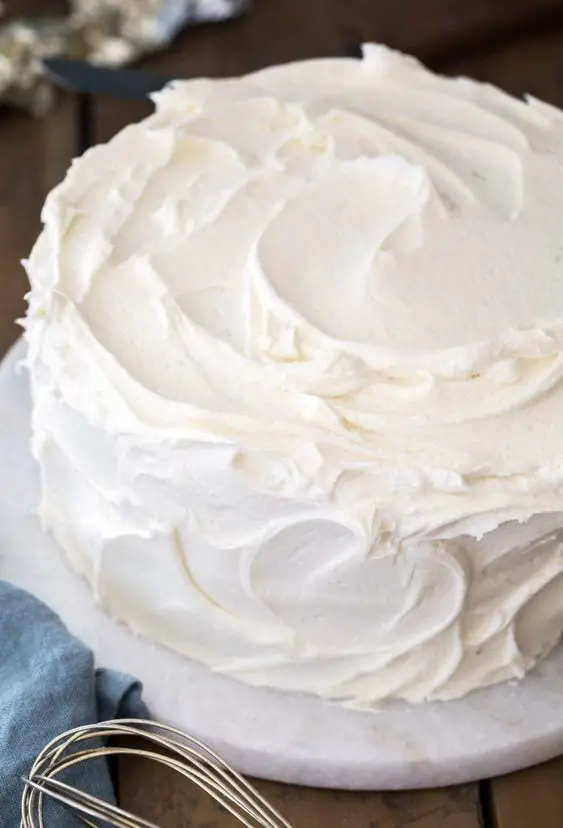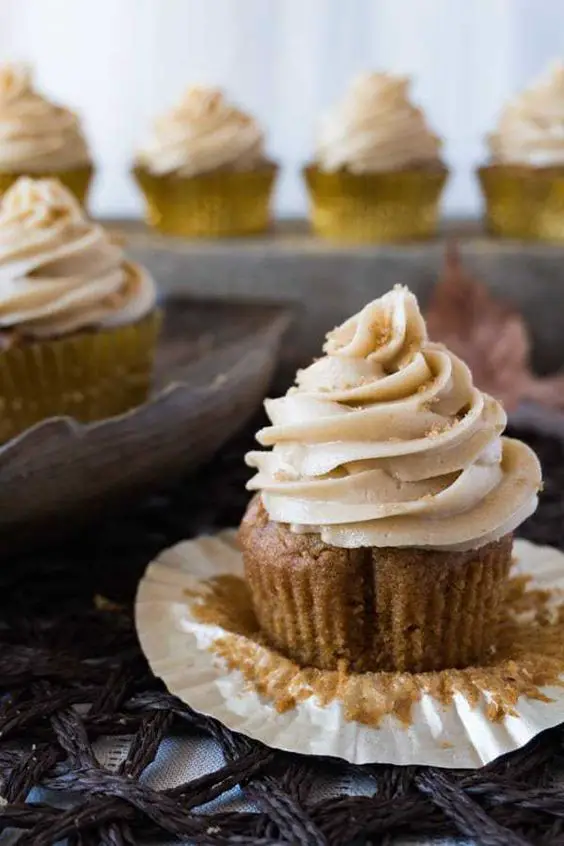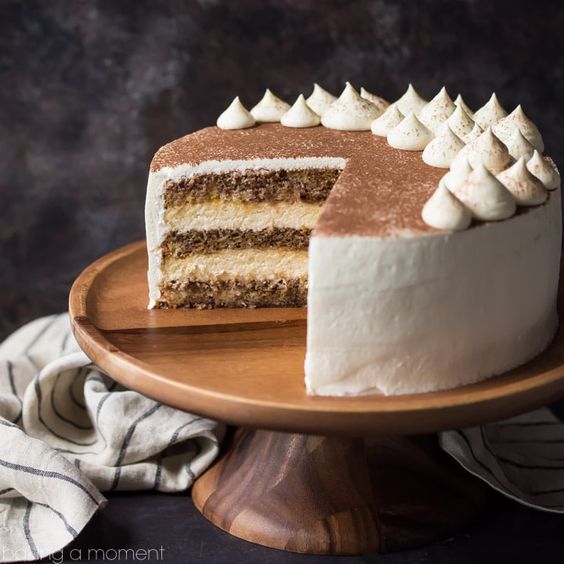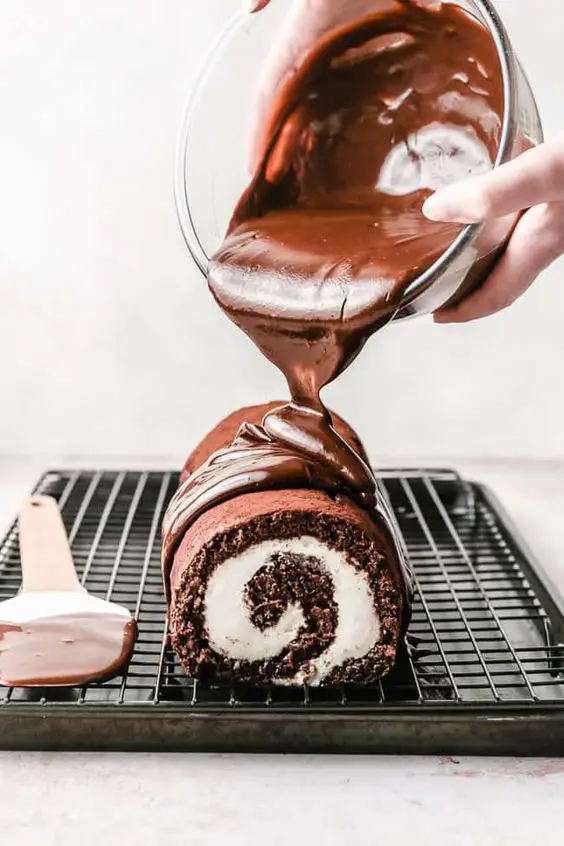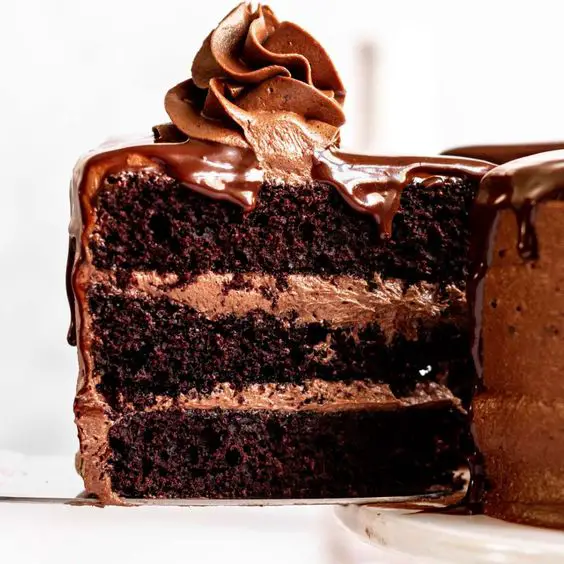French Vanilla Buttercream is a delightful and versatile frosting that elevates the taste and appearance of your baked creations. With its luscious texture and delicate infusion of vanilla flavor, this classic buttercream is a staple in the world of confectionery. Made from a harmonious blend of creamy unsalted butter, confectioners’ sugar, and the essence of premium vanilla beans, French Vanilla Buttercream not only provides a sumptuous coating for cakes and cupcakes but also serves as a canvas for your culinary creativity. Whether you’re a seasoned baker or an enthusiastic novice, this velvety buttercream will lend an air of elegance to your desserts, making every bite a delectable experience reminiscent of a charming French patisserie.

What is French Vanilla Buttercream?
French Vanilla Buttercream is a luxurious and flavorful frosting commonly used to adorn cakes, cupcakes, and pastries. It is made by blending high-quality unsalted butter, confectioners’ sugar, and genuine vanilla extract or vanilla bean seeds. The result is a smooth, velvety texture with a rich and distinct vanilla flavor, providing a delightful contrast to the sweetness of baked goods.
The term “French Vanilla” typically refers to a more intense and custard-like vanilla flavor compared to regular vanilla. In French Vanilla Buttercream, this depth of flavor is achieved through the addition of real vanilla components, which might include using vanilla bean pods or a high-quality vanilla extract derived from whole vanilla beans.
French Vanilla Buttercream not only enhances the taste of desserts but also serves as an excellent base for intricate piping and decorating designs. Its versatility allows for various adaptations, such as incorporating different extracts or colorings to suit the desired flavor profile and aesthetic of the finished confections.
Whether spread generously over a cake, piped elegantly onto cupcakes, or used as a filling between layers, French Vanilla Buttercream brings a touch of sophistication and indulgence to your culinary creations. Its smooth consistency and nuanced taste make it a favorite among bakers and dessert enthusiasts alike, perfect for celebrating special occasions or simply indulging in a decadent treat.
Can I color French Vanilla Buttercream?
Yes, you can definitely color French Vanilla Buttercream. Coloring buttercream allows you to customize the appearance of your baked goods to match a theme, occasion, or personal preference. Here’s how you can color French Vanilla Buttercream:
1. Gel or Paste Food Coloring: Use gel or paste food coloring for best results. These concentrated colors won’t add excess liquid to the buttercream, which could affect its consistency. Start with a small amount and gradually add more until you achieve the desired color. Remember that a little goes a long way, so start with a toothpick’s worth of coloring and increase as needed.
2. Incorporating Color: Add the food coloring while the buttercream is being mixed. This helps distribute the color evenly throughout the frosting. Mix on low to medium speed until the color is fully incorporated. You can add more coloring if you want a deeper or more vibrant hue.
3. Mixing Colors: You can mix different gel or paste food colors to create custom shades. For example, combining red and blue can yield purple, while red and yellow can make orange. Keep experimenting until you achieve the exact color you’re aiming for.
4. Achieving Pastels: For pastel shades, start with a small amount of food coloring and gradually add more until you reach the desired level of color. Pastel colors can be great for delicate and elegant designs.
5. Careful with Liquid Coloring: If you only have liquid food coloring, use it sparingly. Liquid coloring can affect the consistency of the buttercream if too much is added. Consider reducing the amount of liquid elsewhere in the recipe to compensate for the added liquid.
Remember that colors might appear slightly different once applied to the baked goods, so consider doing a small test batch before applying the colored buttercream to your final creation. With a little practice and experimentation, you can achieve beautifully colored French Vanilla Buttercream to complement your delicious treats.

Buttercream is too sweet. How can I fix it?
If your French Vanilla Buttercream is too sweet, there are several steps you can take to balance out the sweetness and achieve a more enjoyable flavor. Here’s what you can do:
1. Add More Butter: Incorporating more unsalted butter can help mellow out the sweetness of the buttercream. Gradually add softened butter to the mixture while continuing to mix until the sweetness is at a level you prefer. This will also contribute to a creamier texture.
2. Increase Vanilla Flavor: Adding a bit more vanilla extract or vanilla bean seeds can help enhance the overall flavor profile of the buttercream and provide a counterbalance to the sweetness.
3. Adjust Sugar: If you have some extra time and ingredients, you can make a slightly larger batch of buttercream and adjust the sugar-to-butter ratio. Start by reducing the amount of confectioners’ sugar you use in the recipe. Gradually add the reduced sugar mixture to your existing buttercream until the desired level of sweetness is achieved.
4. Incorporate Other Flavors: You can introduce other flavors that complement vanilla and help offset the sweetness. For example, a touch of citrus zest (such as lemon or orange) can add a refreshing element, while a pinch of salt can help balance the flavors.
5. Whipped Cream or Cream Cheese: If you’re open to altering the recipe slightly, you can fold in a small amount of whipped cream or softened cream cheese. These ingredients can help tone down the sweetness while adding a different dimension of flavor and creaminess.
6. Acidic Additions: A small amount of lemon juice or another citrus juice can provide a tangy contrast to the sweetness of the buttercream. Be cautious with the quantity, as too much acidity can affect the texture.
7. Dilution: If the buttercream is still too sweet after trying the above methods, you can create a larger batch of buttercream without sugar and gradually combine the two mixtures to dilute the sweetness.
Remember that adjusting the sweetness of buttercream is a delicate process, and it’s best to make gradual changes and taste as you go. This way, you can achieve a balanced flavor that complements your baked goods without overwhelming them with sweetness.

Detailed Recipe for French Vanilla Buttercream
Ingredients:
- 1 cup (2 sticks) unsalted butter, softened
- 4 cups confectioners’ sugar (powdered sugar), sifted
- 2 teaspoons pure vanilla extract or seeds from 1 vanilla bean
- 2-4 tablespoons milk or heavy cream
- Pinch of salt (optional, to taste)
Instructions:
- Prepare Ingredients:
- Ensure the unsalted butter is softened at room temperature. It should be pliable but not melted.
- Sift the confectioners’ sugar to remove any lumps and ensure a smooth texture.
- Cream Butter:
- In a large mixing bowl, beat the softened butter using an electric mixer on medium speed. Beat for about 2-3 minutes until the butter is creamy and slightly lightened in color.
- Incorporate Sugar:
- Gradually add the sifted confectioners’ sugar to the butter. Begin mixing on low speed to prevent the sugar from flying out of the bowl. Once the sugar is partially incorporated, increase the speed to medium and continue mixing until well combined.
- Add Vanilla:
- Add the pure vanilla extract or scrape the seeds from a vanilla bean into the butter-sugar mixture. Mix on medium speed until the vanilla is evenly distributed.
- Adjust Consistency:
- Add 2 tablespoons of milk or heavy cream to the mixture. Mix on low to medium speed until the liquid is incorporated. Assess the consistency; if the buttercream is too thick, add more milk or cream, one tablespoon at a time, until the desired consistency is reached. The buttercream should be smooth and easily spreadable, but not too thin.
- Taste and Adjust:
- If desired, add a pinch of salt to enhance the flavor and balance the sweetness. Mix briefly to incorporate the salt.
- Final Mixing:
- Once the buttercream has reached the desired consistency and flavor, increase the mixer speed to medium-high and beat for an additional 3-5 minutes. This step helps ensure a creamy and velvety texture.
- Coloring (Optional):
- If you wish to color the buttercream, add gel or paste food coloring a little at a time until you achieve the desired color. Mix on low to medium speed until the color is evenly distributed.
- Storage:
- Use the French Vanilla Buttercream immediately to frost cakes, cupcakes, or other baked goods. If not using right away, store the buttercream in an airtight container in the refrigerator for up to a week. Before using, bring it to room temperature and re-whip to restore its smooth consistency.
Note: This recipe yields approximately 4 cups of French Vanilla Buttercream, which is enough to generously frost a two-layer 8-inch cake or approximately 24 cupcakes, depending on the piping style.
Nutrition information:
Please note that the following nutrition information is approximate and can vary based on factors such as specific brands of ingredients and portion sizes.
Nutrition Information for French Vanilla Buttercream (per 2-tablespoon serving):
- Calories: 140
- Total Fat: 8g
- Saturated Fat: 5g
- Cholesterol: 20mg
- Sodium: 0mg
- Total Carbohydrates: 17g
- Sugars: 16g
- Protein: 0g
Note:
- The values above are based on using unsalted butter, confectioners’ sugar, and whole milk for the buttercream recipe.
- Nutritional values can change if you use different types of butter (salted, margarine) or alternative sweeteners.
- The serving size mentioned is for a standard 2-tablespoon portion, which is a common estimate for frosting on a cupcake or a similar-sized treat.
- Keep in mind that buttercream is a high-calorie and high-sugar ingredient, so it’s best enjoyed in moderation as part of a balanced diet.
If you have specific dietary concerns or are looking for alternative ingredients to reduce the calorie or sugar content, you might consider exploring substitutions such as using reduced-fat butter or alternative sweeteners. Always remember to adjust the nutrition information accordingly based on the specific ingredients you use.

Tips to make perfect French Vanilla Buttercream
Creating the perfect French Vanilla Buttercream requires attention to detail and some tried-and-true techniques. Here are some tips to help you achieve a velvety, flavorful, and beautifully textured buttercream:
1. Use Quality Ingredients: Start with high-quality unsalted butter and pure vanilla extract or vanilla beans. The quality of these core ingredients greatly influences the final taste and texture of your buttercream.
2. Soften Butter Properly: Ensure that the butter is softened at room temperature. It should be soft enough to easily cream, but not so warm that it’s melty. Cut the butter into small pieces to speed up the softening process if needed.
3. Sift the Sugar: Sift the confectioners’ sugar before adding it to the butter. This helps prevent lumps and ensures a smooth texture in your buttercream.
4. Gradually Add Sugar: Slowly incorporate the sifted confectioners’ sugar into the butter to avoid a dusty mess. Begin mixing on low speed and gradually increase to medium speed.
5. Beat for the Right Time: Beat the butter and sugar mixture until it is light and creamy. This usually takes about 2-3 minutes. Overmixing can lead to a too-soft buttercream, so avoid excessive beating.
6. Add Vanilla Wisely: Add vanilla extract or vanilla bean seeds after the butter and sugar are well combined. Mixing vanilla too early can hinder the incorporation of the sugar.
7. Adjust Consistency Carefully: Add milk or heavy cream in small increments to achieve the desired consistency. Too much liquid can make the buttercream too thin. If it becomes too thin, add more sifted confectioners’ sugar to thicken it.
8. Watch for Overmixing: Be mindful not to overmix the buttercream once you’ve achieved the desired consistency. Overmixing can cause the buttercream to become too soft and lose structure.
9. Test for Smoothness: Rub a bit of buttercream between your fingers. If it feels gritty, continue mixing until it becomes smooth. This ensures the confectioners’ sugar is fully dissolved.
10. Taste and Adjust: Taste your buttercream and adjust the flavor as needed. If it’s too sweet, consider adding a touch more butter, a pinch of salt, or extra vanilla to balance the flavors.
11. Perfect Piping: For smooth and effortless piping, make sure your buttercream is at the right consistency. If it’s too stiff, piping can become difficult, while overly soft buttercream won’t hold its shape.
12. Store and Re-Whip: If not using the buttercream immediately, store it in an airtight container in the refrigerator. Before using, bring it to room temperature and re-whip for a few minutes to restore its smoothness.
13. Experiment and Practice: Buttercream can be finicky, so don’t be discouraged if your first attempt isn’t perfect. Experiment with small batches, take notes, and practice to refine your technique over time.
With practice and attention to these tips, you’ll be able to consistently create French Vanilla Buttercream that’s not only delicious but also visually stunning for your baked creations.
How to serve:
French Vanilla Buttercream is a versatile and delightful frosting that can be served in various ways to enhance the flavor and appearance of your desserts. Here are some creative and delicious serving ideas:
- Cake Frosting: The most common use for French Vanilla Buttercream is as a frosting for cakes. Spread a generous layer of buttercream between cake layers and on top for a classic and elegant finish. You can create a smooth finish or use different piping techniques for decorative designs.
- Cupcake Topping: Pipe or spread French Vanilla Buttercream onto cupcakes for a delectable treat. You can experiment with different piping tips to create unique swirls or designs. Add sprinkles, edible flowers, or chocolate shavings for extra flair.
- Cookies and Sandwiches: Use French Vanilla Buttercream to sandwich together cookies, creating a delicious filling between your favorite cookie pairs. Sugar cookies, shortbread, or whoopie pies can all benefit from this creamy addition.
- Dessert Shots or Parfaits: Layer French Vanilla Buttercream with cake crumbs, fruit compote, or cookie crumbles in small dessert glasses to create elegant and individual dessert servings.
- Filling for Pastries: Fill pastries, such as éclairs, cream puffs, or Danish pastries, with French Vanilla Buttercream for a rich and indulgent center.
- Cake Pops and Cake Balls: Coat cake pops or cake balls with a thin layer of French Vanilla Buttercream before dipping them in chocolate or candy coating. This adds an extra layer of flavor and helps the coating adhere.
- Crepes or Pancakes: Spread a thin layer of French Vanilla Buttercream on crepes or pancakes, then fold them for a delightful breakfast or dessert option.
- Dip for Fresh Fruit: Serve French Vanilla Buttercream as a dip for fresh fruit slices. It adds a luxurious touch to strawberries, apple slices, and more.
- Ice Cream Topping: Warm French Vanilla Buttercream slightly and drizzle it over scoops of vanilla or other flavored ice creams. It creates a deliciously rich and decadent topping.
- Edible Decorations: Shape and mold French Vanilla Buttercream into decorative elements like flowers, leaves, or other shapes. These can be used to adorn cakes, cupcakes, or other desserts.
- Layered Dessert Trifles: Create layers of French Vanilla Buttercream alternated with cake cubes, fruit, or other dessert components in a glass trifle dish.
- Macaron Filling: Sandwich French Vanilla Buttercream between delicate macaron shells for a delightful twist on this classic treat.
Remember to store any desserts with French Vanilla Buttercream in a cool place or refrigerate if necessary, especially if your environment is warm, to maintain the buttercream’s texture and consistency. Enjoy the luscious and delightful flavors of French Vanilla Buttercream as it adds a touch of sophistication to your favorite treats.

How to store:
Storing French Vanilla Buttercream properly is essential to maintain its texture, flavor, and freshness. Here’s how you can store it:
Short-Term Storage:
- Airtight Container: Place the French Vanilla Buttercream in an airtight container, such as a food-grade plastic container or a glass bowl with a tightly fitting lid.
- Refrigeration: Store the container in the refrigerator if you plan to use the buttercream within a few days. The cold temperature will help prevent the buttercream from spoiling.
- Labeling: Label the container with the date of preparation to keep track of its freshness.
Long-Term Storage:
- Freezing: If you want to store French Vanilla Buttercream for a longer period, consider freezing it.
- Transfer the buttercream to an airtight container or a freezer-safe resealable plastic bag.
- Flatten the buttercream in the container or bag to minimize air exposure and aid in even freezing.
- Seal the container or bag tightly and label it with the date.
- Thawing: To use frozen French Vanilla Buttercream, transfer it to the refrigerator and let it thaw overnight. Once thawed, bring the buttercream to room temperature and re-whip it to restore its smooth consistency.
Tips for Storing:
- Texture Check: After storing, always check the texture of the buttercream before using it. If it has become too firm, allow it to come to room temperature and re-whip until smooth.
- Avoid Excessive Temperature Fluctuations: Try to avoid frequent temperature changes. Going back and forth between the refrigerator and room temperature can affect the texture and stability of the buttercream.
- Flavor Retention: Proper storage helps retain the flavor of the buttercream. Keep it away from strong-smelling foods in the refrigerator to prevent any unwanted flavors from being absorbed.
Note: While French Vanilla Buttercream can be stored, it is generally best to use it as soon as possible to enjoy its peak freshness and flavor. If you plan to store buttercream for an extended period, be aware that freezing and thawing can alter the texture slightly, so it may require re-whipping to restore its original consistency.
Remember that food safety is crucial. If you notice any signs of spoilage, such as an off smell, unusual texture, or mold, discard the buttercream to ensure your health and the quality of your baked goods.
FAQ’s and Troubleshooting about French Vanilla Buttercream
FAQs (Frequently Asked Questions):
- What is French Vanilla Buttercream? French Vanilla Buttercream is a delicious frosting made with butter, confectioners’ sugar, and vanilla extract. It has a rich, creamy texture and a subtle vanilla flavor.
- Can I use salted butter for French Vanilla Buttercream? It’s recommended to use unsalted butter to have better control over the saltiness of the frosting. If you only have salted butter, you can use it, but adjust the added salt accordingly.
- How do I store French Vanilla Buttercream? Store the buttercream in an airtight container in the refrigerator for up to a week. Before using, bring it to room temperature and re-whip to restore its smooth consistency.
- Can I freeze French Vanilla Buttercream? Yes, you can freeze French Vanilla Buttercream. Place it in an airtight container or freezer-safe bag, and it can be stored in the freezer for up to 2-3 months. Thaw it in the refrigerator overnight and re-whip before using.
- Can I color French Vanilla Buttercream? Yes, you can add food coloring to French Vanilla Buttercream to achieve the desired color. Use gel or paste food coloring for best results, as liquid food coloring may affect the frosting’s consistency.
- My buttercream is too runny. What should I do? If your buttercream is too runny, it might be due to warm temperatures or overmixing. Place the buttercream in the refrigerator for about 15-30 minutes to firm up slightly, then re-whip it to achieve the desired consistency.
- My buttercream is too stiff. How can I fix it? If your buttercream is too stiff, it could be because you’ve added too much powdered sugar. Gradually add small amounts of milk or cream (a teaspoon at a time) and mix until the desired consistency is reached.
- Can I add flavorings other than vanilla to the buttercream? Absolutely! You can experiment with different extracts, such as almond, lemon, or raspberry, to create various flavored buttercreams.
- Why does my buttercream have a gritty texture? A gritty texture can occur if the confectioners’ sugar is not fully dissolved. To avoid this, sift the sugar before adding it to the butter and ensure thorough mixing.
- Can I use margarine or shortening instead of butter? While you can use margarine or shortening, butter is generally preferred for its rich flavor. Substituting with margarine may result in a slightly different taste and texture.
Troubleshooting:
- Buttercream is too sweet. How can I fix it? Gradually add unsalted butter (softened) to the overly sweet buttercream and re-whip. The additional butter will help balance out the sweetness.
- My buttercream has air bubbles. How can I get rid of them? To eliminate air bubbles, gently tap the mixing bowl on the countertop to release trapped air. Alternatively, use a spatula to fold the buttercream a few times to smooth it out.
- My buttercream is curdled. What should I do? If your buttercream appears curdled or separated, it might be because the butter was too cold or too soft. Continue mixing at medium speed until it comes together. If it doesn’t improve, try warming the mixture slightly or cooling it before re-whipping.
- Why does my buttercream taste too buttery? If your buttercream tastes overly buttery, it might be due to using too much butter or not incorporating the other ingredients properly. Gradually add more confectioners’ sugar and flavorings while mixing until the taste is balanced.
- Can I fix an over-whipped buttercream? If your buttercream is over-whipped and has a curdled appearance, you might not be able to fully restore its original texture. However, you can try adding a small amount of warm milk or cream and re-whip to salvage it.
- My buttercream is too thin to pipe. How do I thicken it? Refrigerate the buttercream for a short while to firm it up before piping. You can also mix in a bit more confectioners’ sugar, but do so gradually to avoid over-sweetening the buttercream.
Remember, practice makes perfect when it comes to mastering French Vanilla Buttercream. Don’t be afraid to experiment and make adjustments to achieve the desired taste and consistency.
Happy baking!

